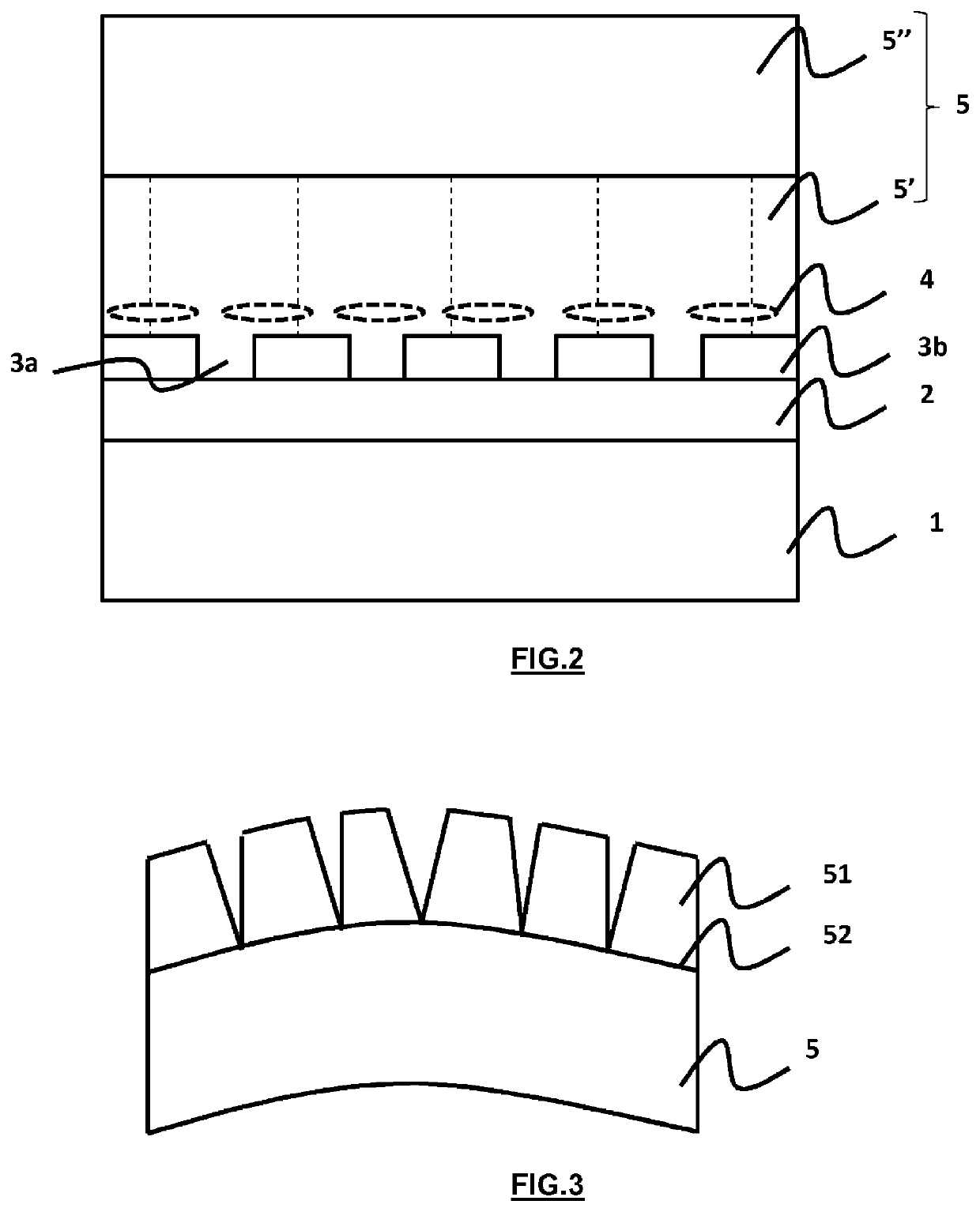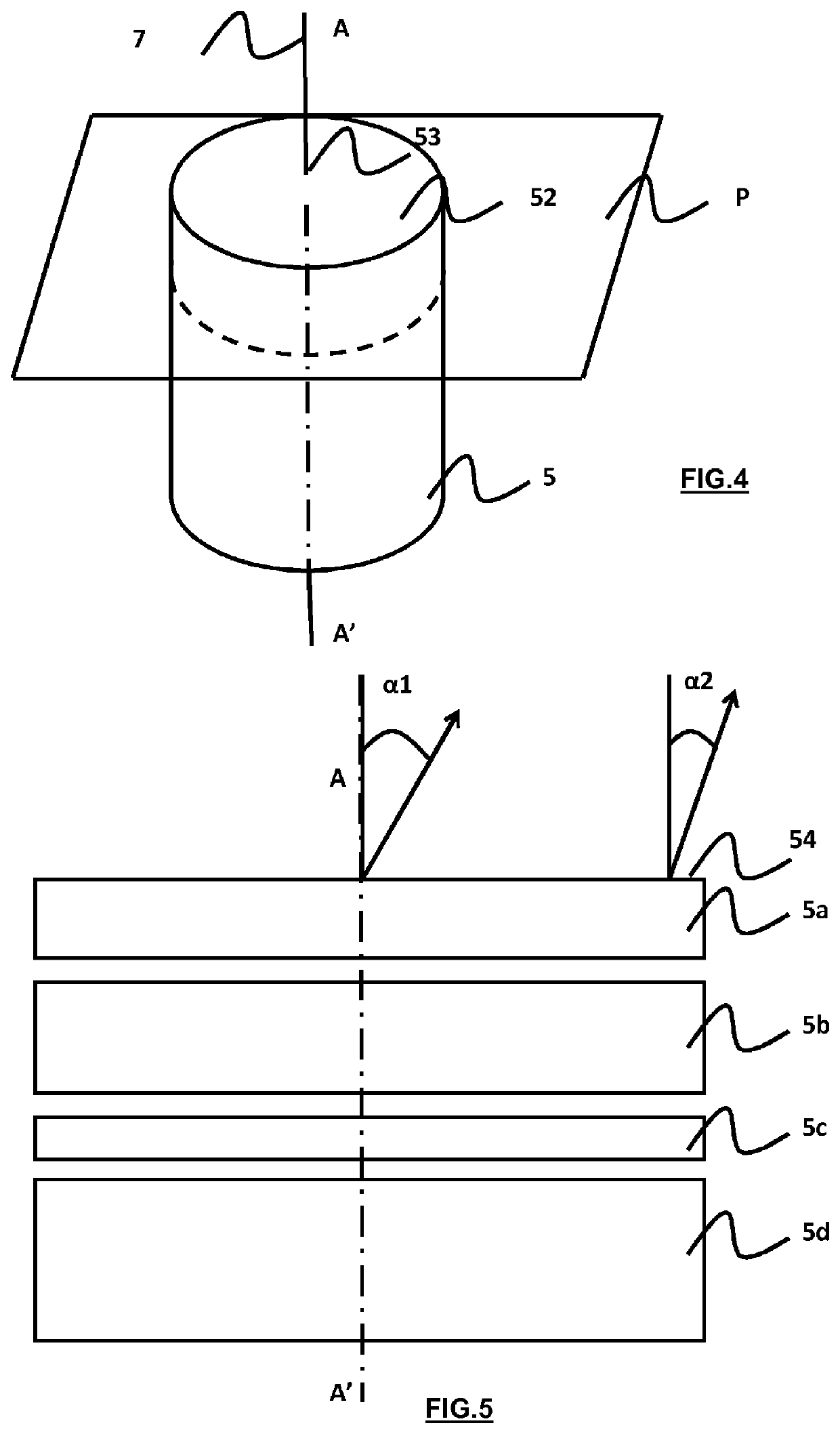Method for the production of wafers of nitride of element 13, having a non-zero truncation angle
a technology of nitride and element 13, which is applied in the direction of basic electric elements, electrical equipment, crystal growth process, etc., can solve the problems of limiting the performance and the lifespan of group-13-element nitride-based components, certain unfavorable properties of element nitride layers, and achieve the effect of facilitating the separation of the first group-13-element nitride layer
- Summary
- Abstract
- Description
- Claims
- Application Information
AI Technical Summary
Benefits of technology
Problems solved by technology
Method used
Image
Examples
Embodiment Construction
[0081]Various exemplary methods of fabricating semiconductor wafers, and of the wafers thus obtained, will now be described in further detail in reference to the figures.
[0082]In these various figures, the equivalent elements bear the same numerical labels. The method according to the invention will be described below in reference to the fabrication of gallium nitride GaN wafers.
[0083]However, it is quite obvious to the person skilled in the art that the method described below may be used to grow a material including a group-13-element nitride layer other than gallium nitride GaN.
1. Fabrication Method
[0084]The main phases of the method of fabricating GaN wafers are illustrated in FIG. 1.
[0085]The method comprises:[0086]i) a growth phase 10 of a first GaN layer 5′,[0087]ii) a formation phase 20 of a separation zone 4,[0088]iii) an epitaxial regrowth phase 30 to form a second thick GaN layer 5″,[0089]iv) a separation phase 40 to obtain a GaN crystal 5,[0090]v) a cutting phase 50 of th...
PUM
| Property | Measurement | Unit |
|---|---|---|
| offcut angle | aaaaa | aaaaa |
| offcut angle | aaaaa | aaaaa |
| thickness | aaaaa | aaaaa |
Abstract
Description
Claims
Application Information
 Login to View More
Login to View More - R&D
- Intellectual Property
- Life Sciences
- Materials
- Tech Scout
- Unparalleled Data Quality
- Higher Quality Content
- 60% Fewer Hallucinations
Browse by: Latest US Patents, China's latest patents, Technical Efficacy Thesaurus, Application Domain, Technology Topic, Popular Technical Reports.
© 2025 PatSnap. All rights reserved.Legal|Privacy policy|Modern Slavery Act Transparency Statement|Sitemap|About US| Contact US: help@patsnap.com



